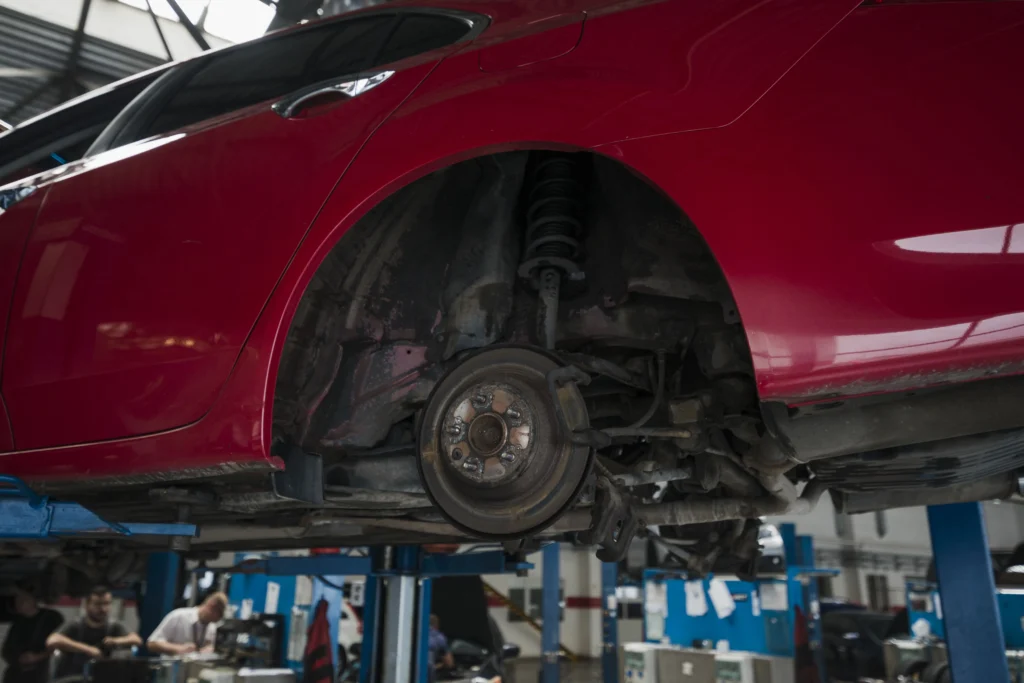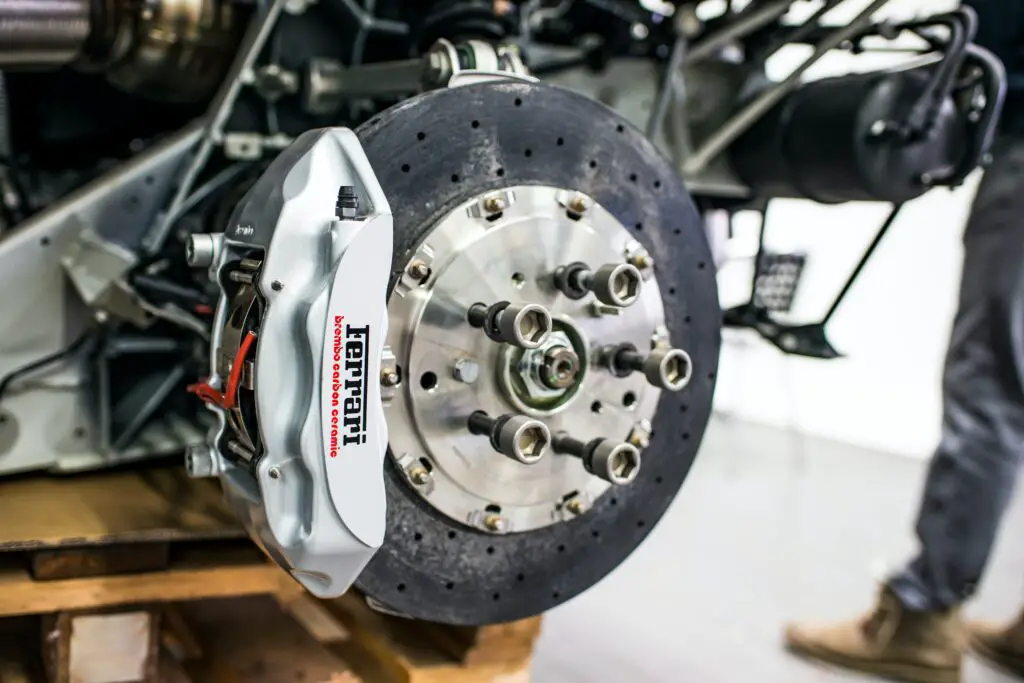When you’re cruising down the highway, the last thing you want is for your car’s safety systems to fail. Yet, secondary brake system malfunctions are a reality that many drivers face.
This critical safety feature, designed to prevent further collisions after an initial impact, can sometimes go haywire, leaving drivers vulnerable on the road.
But fear not! This comprehensive guide will walk you through everything you need to know about secondary brake system malfunctions, from their causes to how to fix them, and even how to prevent them in the first place.
What is a Secondary Brake System and Why Does it Matter?
Before we dive into the nitty-gritty of malfunctions, let’s get our bearings. A secondary brake system, also known as a Secondary Collision Brake (SCB) system, is like your car’s guardian angel.
It’s designed to kick in after an initial collision, automatically applying the brakes to prevent your vehicle from pinballing into other cars, obstacles, or pedestrians. Think of it as a high-tech safety net that catches you when you’re most vulnerable.
But here’s the kicker: when this system goes haywire, it’s not just an inconvenience – it’s a serious safety issue. A malfunctioning secondary brake system can leave you exposed to the very dangers it was designed to protect against. It’s like having a superhero sidekick who suddenly decides to take a coffee break during the climax of the movie. Not cool, right?

The Anatomy of a Secondary Brake System
To understand how things can go wrong, we first need to know how they’re supposed to work. Let’s break down the components of a secondary brake system:
- Sensors: These are the system’s eyes and ears, detecting impacts and feeding information to the control unit.
- Control Unit: The brain of the operation, processing sensor data and deciding when to activate the brakes.
- Brake Actuators: The muscles of the system, physically applying the brakes when commanded.
- Wiring and Electrical Connections: The nervous system, transmitting signals between components.
- Software: The instructions that tell all these parts how to work together.
Now that we’ve got the lay of the land, let’s dive into what can go wrong and why.
Causes of Secondary Brake System Malfunction
- Sensor: Shenanigans Imagine your car’s sensors as overzealous bouncers at a club. Sometimes they’re too sensitive, triggering the system when there’s no real danger. Other times, they’re asleep on the job, failing to detect actual collisions. Damaged or faulty sensors can throw the whole system into chaos.
- Software Bugs: The Digital Gremlins In today’s cars, software is king. But with great power comes great responsibility – and the occasional glitch. Software bugs can cause the system to misfire, applying brakes at the wrong time or failing to activate when needed. It’s like having a GPS that occasionally tells you to drive into a lake – not ideal.
- Electrical Gremlins: When Wires Go Rogue Corroded connections, frayed wires, or short circuits can disrupt the flow of information in your car’s electrical system. It’s like trying to have a phone conversation with a bad connection – important messages get lost in translation.
- Mechanical Mayhem: When Hardware Fails Sometimes, it’s not the brain but the brawn that fails. Worn brake pads, leaky brake lines, or faulty actuators can prevent the system from working even if it’s getting all the right signals. It’s like having a perfectly choreographed dance routine but then tripping over your own feet.
- Maintenance Mishaps: The Human Factor Let’s face it – we’re all guilty of procrastination sometimes. Skipping regular maintenance checks can allow small issues to snowball into big problems. It’s like ignoring that weird noise your refrigerator’s been making for months, then acting surprised when it finally conks out.
Implications of Secondary Brake System Malfunctions
When your secondary brake system decides to take an unscheduled vacation, the consequences can be more serious than you might think:
- Increased Risk of Secondary Collisions: The whole point of the system is to prevent these, so a malfunction leaves you vulnerable.
- Potential for More Severe Injuries: Without the automatic braking intervention, collisions that do occur may be more forceful.
- Legal and Financial Headaches: In some cases, a malfunctioning system could lead to liability issues or insurance complications.
- Loss of Confidence: Once bitten, twice shy. A system failure can make you wary of relying on your car’s safety features.
How to Spot Secondary Brake System Issues
Now that we know what can go wrong, how do we spot the warning signs? Here’s your detective toolkit:
- Warning Lights: That pesky brake system light on your dashboard isn’t just for show.
- Unusual Noises: If your brakes start singing soprano when they should be silent, pay attention.
- Delayed Response: A lag between pressing the brake pedal and feeling the car slow down could indicate a problem.
- Unexpected Braking: If your car starts channeling its inner drama queen and braking for no apparent reason, it’s time to investigate.
Solutions for Secondary Brake System Malfunctions
Alright, Sherlock, you’ve identified the problem. Now what? Here’s your game plan:
- Don’t DIY: This isn’t the time to channel your inner mechanic. Secondary brake systems are complex beasts best left to the professionals.
- Get a Diagnostic Scan: Modern cars are like patients – they need a proper checkup. A diagnostic scan can reveal error codes that point to specific issues.
- Update Your Software: Sometimes, the solution is as simple as a software update. Think of it like giving your car a brain boost.
- Inspect and Replace Sensors: Faulty sensors are common culprits. Have them checked and replaced if necessary.
- Check Electrical Connections: A thorough inspection of wiring and connections can reveal and fix electrical gremlins.
- Mechanical Inspection: Don’t forget the basics. Brake pads, rotors, and hydraulic components all need to be in top shape.
- Regular Maintenance: Prevention is better than cure. Stick to your car’s maintenance schedule like your life depends on it – because it might.
Frequently Asked Questions
Q: What is your secondary brake system?
A: Your secondary brake system is a safety feature that automatically applies the brakes after an initial collision to prevent further impacts. It’s like having a guardian angel that takes control of your brakes when you’re too disoriented to do so yourself.
Q: What does brake malfunction mean?
A: A brake malfunction refers to any situation where your braking system isn’t working as it should. This could range from reduced braking power to complete failure. In the case of secondary brake systems, it could mean the system doesn’t activate when it should, or activates when it shouldn’t.
Q: What does brake system failure mean?
A: Brake system failure is a more severe form of malfunction where the brakes cease to function effectively or at all. This is a serious safety issue that requires immediate attention. In the context of secondary brake systems, failure could mean the system doesn’t engage at all after a collision.
Q: How to reset parking brake malfunction Toyota?
A: While this isn’t directly related to secondary brake systems, it’s a common concern. For most Toyota models:
- Turn the ignition on (don’t start the engine)
- Press and hold the parking brake switch for at least 1 second
- Release the switch and wait for 5 seconds
- Press and hold the switch again for at least 1 second
- Release the switch If this doesn’t work, consult your vehicle’s manual or a Toyota dealership, as the process can vary between models.
Conclusion
Secondary brake system malfunctions, while concerning, are not insurmountable challenges. By understanding how these systems work, recognizing the signs of malfunction, and taking proactive steps to maintain them, you can ensure that this crucial safety feature is always ready to have your back.
Remember, technology is there to assist us, not replace our judgment and responsibility as drivers. Stay informed, stay alert, and embrace the incredible advancements in automotive safety. After all, the road ahead is full of possibilities – let’s make sure they’re safe ones.
So the next time you hit the road, take a moment to appreciate the invisible guardian working tirelessly to keep you safe. And if you hear a strange noise or see a warning light? Don’t ignore it – your future self (and your secondary brake system) will thank you.
Drive safe, stay curious, and may your journeys always be smooth and secure. After all, in the grand highway of life, we’re all just trying to reach our destinations safely – one brake at a time.

